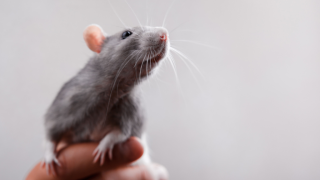
Meagre decrease highlights urgent need for government phase-out strategy
We acknowledge the slight decrease in animal testing in Great Britain, as published by the Home Office today, but remain highly concerned that the pace of change remains so painfully slow that cruel tests on animals look set to continue for decades to come.
There were 2,637,578 uses of animals in laboratories in Great Britain in 2024. This is a meagre 2% decrease from 2023, and fails to meet either public expectations or scientific potential, and leaves the government at risk of falling short in its manifesto commitment to work to phase out animal testing.
We reiterate our call for the government to publish a bold, ambitious and deliverable strategy to phase out animal testing, ensuring it is:
-
Bold and ambitious, with a clear vision for ending tests on animals in this country;
-
Concrete, with specific targets and timelines;
-
Action-oriented, delivering tangible policy measures and regulatory reform;
-
Led from the top, with ministerial accountability and departmental coordination through a cross-government taskforce;
-
Collaborative, engaging civil society, NGOs, academia, and industry to boost innovation and reduce the number of tests on animals;
-
Forward-looking, defending existing protections and building on initiatives already underway both inside and outside of government;
-
Well-funded, providing long-term funding for education and training, replacement-focused research to meet evolving regulatory needs, and investment in the further development of centres of excellence.
The number of animals used in experimental procedures fell by 3% in 2024, to 1.43 million. There was virtually no change in the creation and breeding of genetically altered animals – those whose genes have been modified but have not then been used in further tests. This accounted for 54% of all uses (1,430,020).
Uses of animals included:
-
Regulatory testing and routine production – 315,290 (22% of the total, a 3% increase on 2023)
-
Basic, curiosity-driven research – 741,555 (52% of total, 4% decrease)
-
Translational research – 339,673 (24% of total, 8% decrease)
-
Other uses – 33,502 (2% of total, 36% increase)
Regulatory testing is designed to assess the safety or effectiveness of chemicals, medicines and other products; routine production uses animals to produce things like antibodies; basic research attempts to shed light on biological processes; translational research attempts to develop treatments or cures for diseases; and ‘other uses’ includes animals used in higher education, species preservation and environmental protection.
Suffering of animals in tests:
-
Moderate or severe pain and suffering – 488,255 (18% of the total, including long-term disease and even death during the experiment)
Tests on species:
-
Dogs – 2,646 (30% decrease)
-
Monkeys – 1,936 (11% decrease)
-
Rabbits – 6,195 (31% decrease)
-
Guinea pigs – 2,698 (28% decrease)
-
Cats – 82 (30% increase)
-
Horses – 11,483 (1% increase)
-
Mice – 1,869,064 (3% decrease)
-
Rats – 150,221 (1% increase)
The statistics also show that, despite progress in some areas, the full elimination of increasingly outdated tests is yet to be achieved and, in fact, an increase for some tests has been observed for 2024. Our Replace Animal Tests (RAT) List describes animal tests that are conducted in Britain despite having appropriate non-animal replacements and whose abolition could save over 80,000 animals every year. Tests on this list include:
-
Botox batch potency testing – 52,213 mice (5% increase)
-
Eye irritation and corrosion tests – 3 (down from seven)
-
Skin sensitisation tests – 148 mice (50% decrease)
-
Skin irritation and corrosion - zero (down from three)
Use of animals by sector:
-
Chemicals testing – 59,814 (33% increase)
-
Human medicines – 148,694 (3% decrease)
-
Veterinary medicines – 84,046 (7% increase)
-
Plant protection products, such as pesticides – 11,756 (18% decrease)
-
Food production – 9,971 (14% decrease)
The testing of chemicals includes ingredients used in everyday consumer products. There were no animals used in the testing of ingredients exclusively used in cosmetics products in 2024.
Dr Emma Grange, our Director of Science and Regulatory Affairs, said: “With 2.64 million uses of animals in British laboratories in 2024, the rate of decline remains painfully slow. We hope that the government’s commitment on a strategy for the phase-out of animal testing in Great Britain means that this is one of the last years where the use of animals is anywhere near this level. The general public are ready for animal testing to end, and science is ready to make the transition - now there must be action to ensure that animal testing does not continue for decades to come.
“We need bold, forward-thinking policies which can begin to free us from the use of outdated experiments on animals, to the benefit of all, including the animals used in tests. The focus must now be on plans to end animal testing and the transition to exclusive use of non-animal approaches, some of which have already been shown to perform at least as well, or better, than tests on animals. The government must make good on its promise to partner with scientists, industry, and civil society to proactively contribute to the progression away from animal testing. Any cruel animal test is one too many and we will continue to fight for zero animal experiments in Great Britain.”
